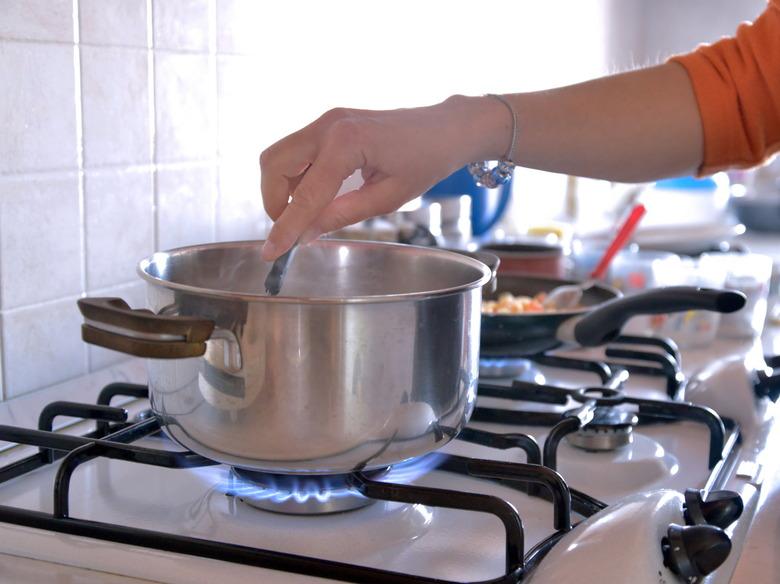Why Does My Gas Stove Leave Black Marks On My Pots?
Cooking at home can create large messes, both on your oven and your pots and pans. A gas stove making pots black may be an unwanted aesthetic addition to your kitchen décor, but because it uses flames, a gas stove sometimes scorches the pots and pans used for cooking. Maintaining your stove can help you prevent these unsightly marks, and if you do get them, extra cleaning should remove the marks.
Gas Stove Making Pots Black
A gas stove might turn your pots black if it is not heating evenly or if the heat is turned up too high. If the flame is not heating evenly, you will notice that the flame is blue on the outside with a yellow core. If you see yellow, your air to flame ratio needs to be adjusted. Adjust your air intake valve on gas stove until you see only a blue flame gas stove color, and that should fix the problem.
Keeping Black Marks Off Pots
Keep the heat as low as you can to complete your cooking job. If you can, cook foods longer on a lower setting to avoid black marks. Try to cook on a setting that keeps the flame from touching the bottom of the pan, but if that's not possible, at least don't allow the flame to come up around the sides of the pan.
World of Pans suggests cast iron as an alternative to traditional pots and pans. These pans are already black, so if they do get some marks, they will not show anyway. Cast iron is durable, lasting longer than other pans, without requiring a lot of cleaning and maintenance. After a gentle scrubbing with water and soap, you can rub grease in the cast iron pan to help it last longer.
Cleaning Your Pots and Pans
Even if you try to prevent black marks on your pans, you might still get the occasional one or two. If you are using cast iron or other black pans, these marks shouldn't be a problem; however, some pans and pots come in designer colors and are made to match other kitchen appliances and decorations. Keep these clean by scouring them with oven cleaner if they get black marks. You can also boil a large pot of soapy water, place the marked pot in the larger pot and boil it for a few minutes.
Cleaning the Stove
A dirty stoves ends up making your pans dirty. The oily material on the burners turns to smoke when the heat is on, and the smoke leaves sooty deposits on the pans. To prevent a gas stove producing soot, clean your stove regularly, especially after a spill.
To do this, turn all burners off, and remove the grates. Use a damp sponge or cloth and warm soapy water to clean the surfaces. A spray glass cleaner can get rid of caked-on areas. You can use an abrasive cleaner, but watch that it does not scratch the surface. Don't use a soap-filled scouring pad.
Using a Flame Tamer
A flame tamer, which is a metal plate that you place over a gas burner, diffuses heat evenly underneath cooking pots. And it's even heat distribution that helps prevent black marks on pans. Low-quality cookware typically conducts heat unevenly, so using a flame tamer can help.
